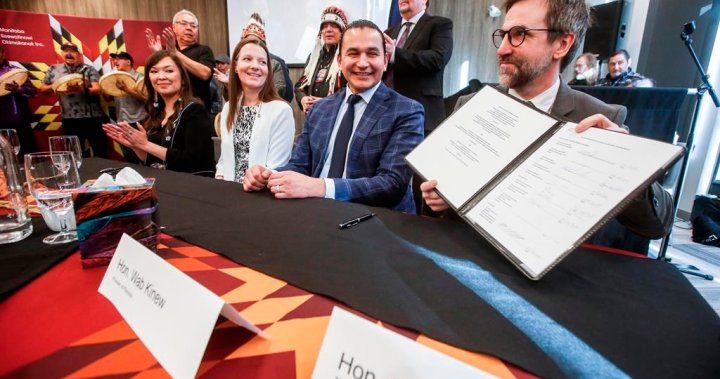Manitoba’s Premier Wab Kinew has signalled he wants to take another look at how the federal carbon price is applied in the province, but it could take up to three years for any change.
The lone province with the federal pollution price being applied across the economy, Manitoba is not treading new ground in looking for a change to carbon pricing.
Currently, the federal carbon backstop is set at $65 per tonne, increasing to $80 per tonne on April 1. The minimum levy will more than double by the end of the current annual increase schedule, hitting $170 per tonne by 2030. The carbon price is applied to fuel such as gasoline in most provinces and territories, but only Manitoba, the Yukon and Nunavut do not have their own carbon pricing systems in place for industrial purposes.
When asked earlier in January if drafting a provincial plan is a course of action Kinew is considering, he talked about Manitoba’s predominantly hydro-based electricity grid and wanting to collaborate with Ottawa.
Under the relevant legislation, any province or territory can introduce its own carbon pricing system if it meets the federal backstop, but jurisdictions can’t just introduce a plan at any moment. Environment and Climate Change Canada (ECCC), says that there will be an interim assessment of the provincial and territorial pollution pricing plans in 2026 to ensure they meet federal criteria for 2027 to 2030. In a statement, ECCC says provinces and territories will be able to again submit their own pollution pricing systems as part of the 2026 interim assessment.

In the last major carbon pricing update back in November 2022, Saskatchewan’s plan for industrial emissions was accepted by Ottawa, joining Alberta, Newfoundland and Labrador, Nova Scotia, Ontario and Prince Edward Island in having its own industrial pricing system.
Get the latest National news.
Sent to your email, every day.
The Saskatchewan plan uses the federal backstop price, which the province unsuccessfully fought in court, but in the Saskatchewan Party government’s announcement of the new plan, they tout all money collected by the levy will stay in the province. Saskatchewan estimates this would be worth $3.7 billion as of 2030.
In addition to collecting its own carbon price, the Saskatchewan Output Based Pricing System (OBPS) includes a credit system for industrial emitters that use carbon capture technology. Industrial emitters also have the option to pay into the Saskatchewan Technology Fund as an alternative compliance measure with the OBPS. This fund is meant to support research and technology aimed at emission reduction.
This update to carbon pricing also involved application of the federal price applied in Newfoundland and Labrador, Nova Scotia and Prince Edward Island for the first time.
British Columbia, New Brunswick, the Northwest Territories and Quebec are the lone jurisdictions without the federal fuel charge, because they all have their own pricing scheme that incorporates the federal backstop. This means all that revenue stays in the province or territory.
© 2024 Global News, a division of Corus Entertainment Inc.




